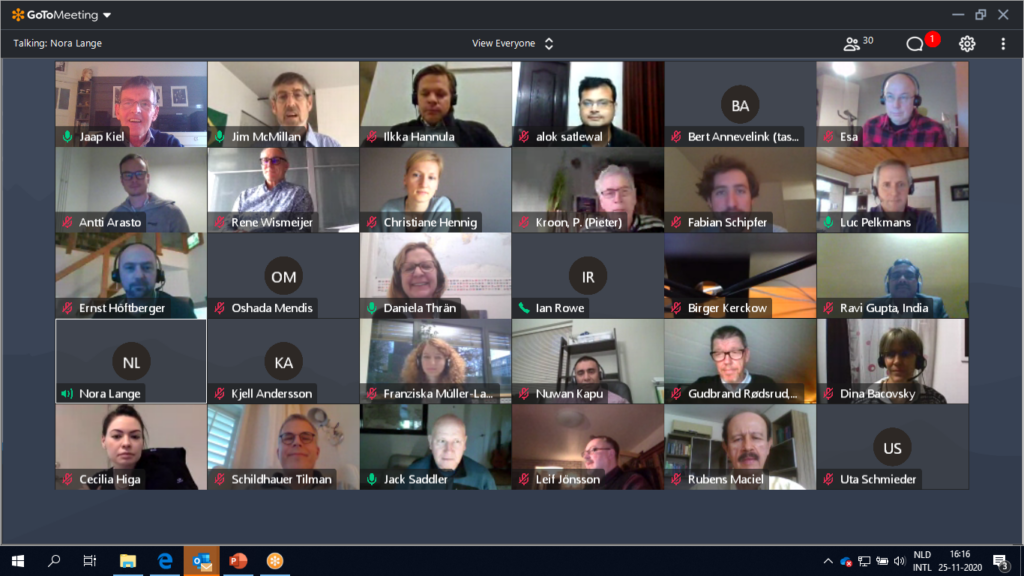Workshop on role of biorefineries in grid balancing

IEA Bioenergy Task 39-Task 44 Joint Workshop, “Role of biofuels production / biorefineries in grid balancing”, 25 November 2020, Virtual
Due to increasing electrical power production from fluctuating renewable sources like wind and solar, there is an important role for bioenergy to help balance the electricity sector by aiding electrical grid stabilization and supply reliability. On the other hand, surplus electrical power and hydrogen produced therefrom can be used to improve biofuels production and biorefinery processes by enabling increased conversion rates and yields of fuel products, increased biocarbon utilization as well as diversifying the types of fuels and energy products being produced. Several concepts to produce heat, electricity, fuels and other products in single high-efficiency processing plants are under development.
This workshop’s objective was to provide an overview of flexibility options for fuel production-oriented biorefineries and gain insights into concepts and challenges for biorefinery designs that enable more flexible biofuel and biopower production. The workshop also provided a forum for IEA Bioenergy stakeholders to discuss the barriers and success factors to implement emerging grid-flexible biorefinery concepts in energy systems with high shares of renewables as well as to explore potential Task 39-Task 44 future collaborations related to advancing analysis and demonstration of biofuels-producing biorefineries for grid balancing.
Four bioenergy experts, two invited by Task 39 and two by Task 44, gave presentations detailing the current state of the art of multi-product biorefining and describing more grid-flexible biorefinery designs being proposed and investigated to enable better integration of multiproduct biorefineries into electrical grids to improve grid stability, either by exploiting low cost surplus power when it is available or by supplying power to the grid when this is needed.
A key challenge identified and discussed in the workshop is the generally higher costs required to implement biorefinery designs that enable greater grid flexibility. For example, increased costs are required to install additional feedstock handling, power generation or hydrogen production capacities, additional capacities that will then be used to balance the grid only some of the time. Discussions highlighted the need for further research into compelling schemes as well as the potential for industrial symbiosis-oriented plant designs to mitigate cost barriers. For example, the higher cost of provisioning biorefineries for increased grid balancing capability can be avoided or greatly reduced by leveraging existing “stranded” capital or co-locating adjacent to complementary facilities such as wastewater treatment or biogas production plants. It was also noted that stronger policies requiring and incenting industrial symbiosis-oriented planning are needed to stimulate progress in larger-scale demonstration of grid-stabilizing designs that can benefit the greater energy system in addition to increasing biorefinery performance flexibility.
Workshop participants concluded that this is an intriguing area deserving of more investigation and that further analysis and demonstration of grid-flexible biorefinery designs is needed. Participants agreed this area is ripe for future multi-stakeholder and international technical collaborations.
Presentations:


